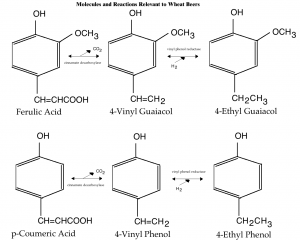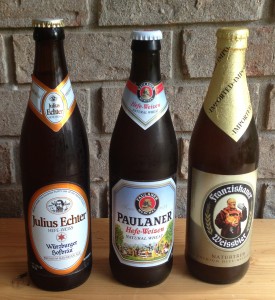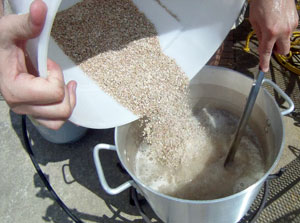
Some of the major biochemical pathways relevant to flavor an aroma of wheat beers. The conversion of ferulic acid (from wheat bran) to 4VG is the most important transformation. (Click on the diagram to enlarge.)
The most interesting bit of chemistry relevant to brewing a wheat beer involves the transformation of ferulic acid into 4-vinyl guaiacol. (The chemistry with regards to the esters, including the “banana ester” (iso-amyl acetate), is the pretty much the same as in “regular” ales.) However, a look at a variety of related molecules — where they come from and what they get converted into — is interesting and may be helpful to brewers looking to track the source of off flavors when they appear.








Recent Comments